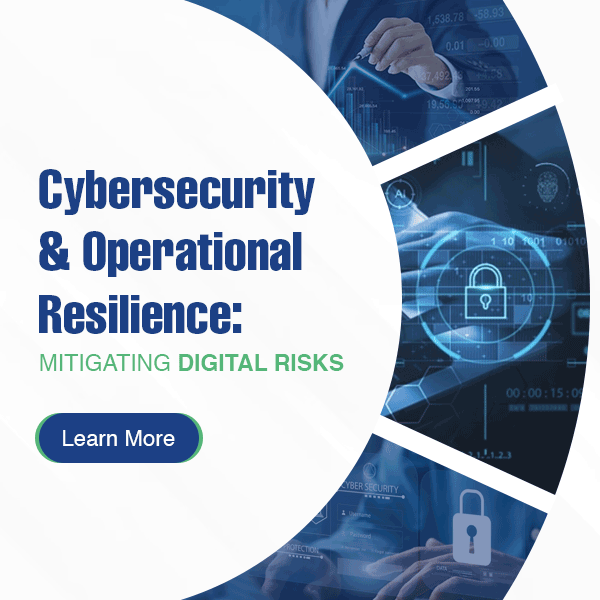In today’s world, we’re constantly connected online, but that also means there are more threats out there trying to steal our information. This blog is all about exploring how we can protect ourselves and our organizations from these digital risks. So, come along on this journey with us as we navigate the world of cybersecurity and operational resilience together.
Common Digital Risks
Here are some common digital risks faced by companies:
- Cyberattacks: include ransomware, malware, phishing, and denial-of-service (DoS) attacks. These attacks can disrupt operations, compromise data integrity, and lead to financial loss.
- Data Breaches: Unauthorized access or leakage of sensitive information, such as customer data or intellectual property, can damage trust with stakeholders and result in legal and financial repercussions.
- Third-party Risks: Dependence on third-party vendors or service providers introduces vulnerabilities, as their security measures may not be as robust. Potentially leading to supply chain disruptions or data breaches.
- Technological Failures: Hardware malfunctions, software bugs, or system crashes can halt operations, causing downtime and impacting productivity.
- Human error: Mistakes made by employees, such as unintentional data deletion, incorrect system configuration, can undermine operational resilience.
- Regulatory Compliance: Failure to comply with industry regulations or data protection laws can result in penalties, legal actions, and reputational damage, affecting operational continuity.
- Emerging Technologies: Adoption of new technologies like IoT devices, artificial intelligence, or cloud computing brings new risks such as vulnerabilities in connected devices or data privacy concerns.
Instances of Cyber Attacks
- JPMorgan Chase & Co. (2014): Experienced a significant data breach affecting approximately 76 million households and 7 million small businesses. The breach compromised customer contact information and, in some cases, account details.
- Bangladesh Bank (2016): Cybercriminals attempted to steal nearly $1 billion from the Bangladesh central bank’s account at the Federal Reserve Bank of New York. Although most of the attempted transfers were blocked, around $81 million was successfully transferred to accounts in the Philippines.
- Office of Personnel Management (OPM) (2015): Experienced one of the largest data breaches in U.S. government history. Compromising the personal information of over 21 million current and former federal employees, contractors, and their families.
Ways of Stopping Digital Risks
There are several ways to avoid digital attacks:
- Educate Employees: Provide regular cybersecurity training to employees to raise awareness about common threats like phishing and malware.
- Use Strong Passwords: Encourage the use of complex passwords for all accounts, and consider using multi-factor authentication for added cybersecurity.
- Keep Systems Updated: Regularly update software, operating systems, and security patches to address vulnerabilities and reduce the risk of exploitation by cyber attackers.
- Implement Security Measures: Deploy firewalls, antivirus software, and intrusion detection systems to protect against malware and unauthorized access.
- Encrypt Data: Utilize encryption techniques to protect sensitive data both in transit and at rest. This reduces the chances of a cyber attack.
- Backup Data Regularly: Implement a robust data backup strategy to ensure critical information is protected and can be recovered. Backup data helps in the event of a cyber attack or system failure.
- Secure Network Connections: Use Virtual Private Networks (VPNs) to secure remote connections and limit access to sensitive information.
Our Resilience Management Platform, “AutoResilience”, is industry-leading and has four modules for Risk, Crisis, Business Continuity, and Cyber resilience. According to analysts like Gartner and Forrester, we’ve helped numerous banks globally reduce the impact of disruptions, ensure regulatory compliance, and safeguard reputation. Risk should no longer be feared or avoided, but instead should be utilized as a means to achieve strategic value and improve performance.













